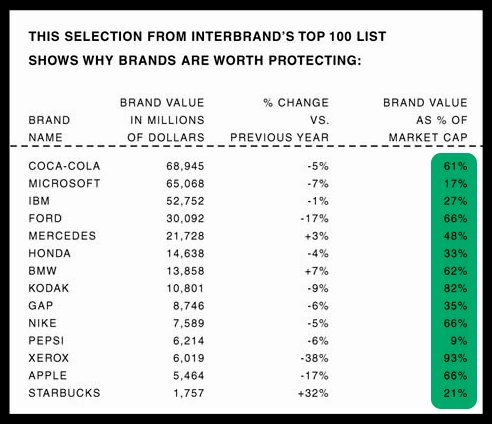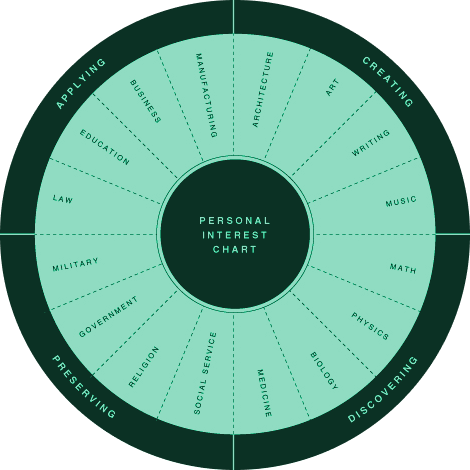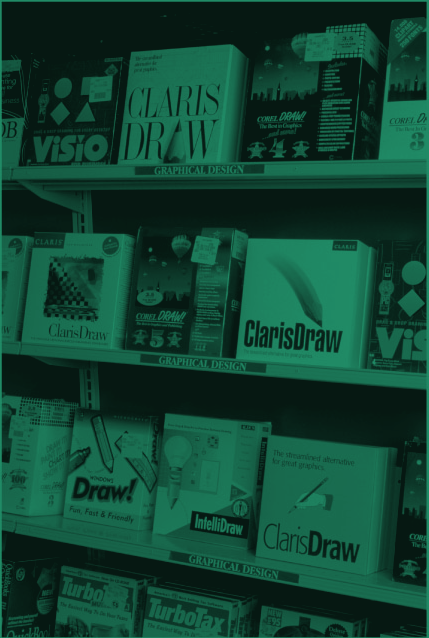The Brand Gap by Marty Neumeier
How to bridge the distance between business strategy and design?
The Brand Gap is a very short and concise intro to branding, it calls itself a whiteboard overview.
The Brand Gap touched a lot of topics I already had read about and solidified my understanding of branding. In fact, I already had internalized the gap idea and “had come up with it” even before reading this book. 😅
My main takeaways:
- as we live globally, we are not restricted by country boundaries as much, but we need the “us” and “them”. So, we create our own tribes where we want to belong. Charismatic brands ride this wave.
- brand does not have to be super consistent, as long as it does not loose its main essence.
- being a #1 brand in category gives an immense monetary value as you can afford to cost a premium not sell cheap.
- aesthetics are important. We are time-poor and information-rich, focus on feelings and evoking emotions.
- quick and dirty research is the best - better than a big one and better than none at all.
What exactly is brand?
A brand is a person’s gut feeling about a product, service, or company.
That implies there are thousands of brands for every company and it’s corporate strategy.
A brand is not what you say it is. It is what they say it is.
Trust creation is a fundamental goal of brand design.
Branding is hot
Branding has become so important because as our society has moved from an economy of mass production to an economy of mass customization, our pusrchasing choices have multiplied.
We’ve become information-rich and time poor.
As a result, our old method of judjing products - by comparing features and benefits = no longer works.
The situation is exacerbated by competitors who copy each others’ features as soon as they’re intrduced, and by advances in manufacturing that make quality issues moot.
Evolution to consumer centric marketing
As we’ve moved from a one-size-fits-all economy to a mass-customization economy, the attention of marketing has shifted from features -> benefits -> experience -> tribal identification.
Selling has evolved from an emphasis on “what it has” -> “what is does” -> “what you feel” -> “who you are”.
The brand gap
Whenever there’s a rift between strategy (logic) and creativity (magic) - there is a brand gap.

For the customer, it can be like trying to listen to a state-of-the-art radio through incompatible speakers. The signal comes in strong, but the sounds are unintelligible.
Charismatic brands
A charismatic brand can be defined as any product, service, or company for which people believe there’s no substitute.
Often, they claim the dominant position in their category, with market shares of 50% or higher. 🤯
Strong hallmarks of charismtic brands are:
- a clear competitive stance
- a sence of rectitude
- a dedication to aesthetics
Why aesthetics?
Because it’s the language of feeling, and, in society that’s information-rich and time-poor people value feeling more than information.
The five disciplines of branding
- Differentiate
- Collaborate
- Innovate
- Validate
- Cultivate
1. Differentiate
- Who are you?
- What do you do?
- Why does it matter?
Unless you have compelling answers to all three differentiation questions, meaning that customers find them irresistible, you haven’t got a brand.
Differentation works because our brain acts as a filter to protect us from the vast amount of irrelevant information that surrounds us every day and so, it keeps in mind only the differences.
The traditional view on design is that is has four possible goals:
- to identify
- to inform
- to entertain
- to persuade
- With branding there is also 5th - to differentiate
The danger is rarely too much focus, but too little. An unfocused brand is one that’s so broad that it doesn’t stand for anything.
Big fish in a small pond
It is often better to be #1 in a small category than to be #3 in a large one. At #3 your strategy may have to include a low price, whereas at #1 you can charge a premium.
Can’t be #1 or #2? Redefine your category.
The law of the jungle is “survival of the fittingest”.

2. Collaborate
The most important shift in business today is from “ownership” to “partnership”, and from “individual tasks” to “collaboration”. The successful company is not the one with the most brains, but the most brains acting in concert.
/ Peter Drucker
There are 3 basic models for managing brand collaboration:
- outsource the brand to a one-stop shop
good: efficiency as not much resources needed from company, ability to unify a message accross media, ease of management for the client;
bad: in some parts quality will be lost and company will cede stewardship of the brand - outsource the brand to a brand agency
good: unify message across media, can get best-of-breed specialists
bad: stewardship of brand still resides with the brand agency - steward the brand internally with an integrated marketing team (that stewards external brand agencies under its lead)
good: unify message across media, freedom to work with bres-of-breed specialists and internal stewardship
bad: requires a strong internal team to run it
3. Innovate
When a brand does not touch your emotions, it is probably the fault of execution, not strategy.
Execution (creativity) is the most difficult part of the branding mix to control.
Q: How do you know when an idea is innovative?
A: When it scares the hell out of everybody.
Prototype backwards
Prototypes save brands (and movies) from disasters and cut through the “red tape” of marketing documents.
Instead of writing a list of features and working towards a concept, team members can go straight to a concept, then add whatever features are needed to support it.
When everyone zigs, zag
In the world of branding, creativity doesn’t reuire reinventing the wheel, but simply thinking in fresh ways. It requires looking for what industrial designer Raymond Loewy called MAYA solution.
MAYA - the Most Advanced Yet Acceptable
4. Validate (test)
You should always seek out feedback from your audience. Tio-down communication style does not work anymore. Your marketing communication is a contact sport, and spectators are full participants.
Testing, or validation is the process of emasuring brands against meaningful criteria. All brand expressions, from icons to actual products, need to score high in 5 areas of commuication:
- distinctiveness (stand out)
- relevance (appropriate for goals)
- memorability (easy to recall when needed)
- extendibility (how well it works accross media, cultural boundaries and message types - can it be extended?)
- depth (able to communicate with audiences on a number of levels - information, style or emotion)
People are different
There is a fundamental split between 2 main personality types, those who rely mostly on hard information (facts) to make a purchasem and those who rely mostly on soft information (feelings)
This chart divides the world into 4 mindsets, based on people’s job interests: applying, creating, preserving and discovering.

- Appliers gravitate toward precise, realistic and familiar graphics
- Creators go for the lyrical, abstract and novel graphics
Good research
Good research is the least amount of information that gets you out of first gear and onto the highway.
If you need to choose among prototypes, one-to-one interviews can give you enough insight to choose with confidence. If you’re looking for an understanding of audience behaviourm ethnographic observation can turn up some suggestive insights. A benefit of ethnography is that it tends to circumvent the Hawthorne effect by viewing human nature unobtrusively from the sidelines.
You’d be suprised by how much you can observe by watching
/ Yogi Berra
Go for bunch of smaller studies than a one large one as:
It’s usually better to get a rough answer to the right question than a detailed answer to the wrong question.
The Swap test
Take any piece of visual communication and cover up your trademark with your hand.
Can you tell whose piece it is?
If the communication in question looks as if it could have come from any other company or brand, then it’s less than it could be.

The Concept test
To:
- get the right idea
and - get the idea right,
create a range (as much as 7 of them, but best is 2-3) of prototypes of the brand element in question. Present the prototypes to at least 10 members of the real audience (not compay insiders!), ine person at a time. Ask a series of questions and try to get their understanding.
Brand promise questions:
- Which of these promises is most valuable to you?
- which company would you expect to make a promise like this?
- If company X make this promise, would that make sense?
- What other type of promise would you expect from company X?
- WHY?
Brand icon questions:
- Which of these icons catches your eye first?
- What made you notice it?
- Does it remind you of any other icons you’ve seen?
- What do you think this particular icon means?
- If it’s really supposed to mean X, do you think one of these other choices expresses it better?
The Field test
If the first point of contact between customer and product will be the store, then the store is where the product must first succeed. If the product comes in a package, then the package is where the product must succeed.
5. Cultivate
brands can afford to be inconsistent - as long as they don’t abandon their defining attributes.
If you can wake up wearing one set of clothes, go on the day with another and go out in the night with a different one, so can also your brand.

Building trust is crucial. Be careful and keep it.
The holy grail - sustainable competitive advantage.
Take-Home Lessons
7 criteria for a good name
- Distinctiveness: does it stand out from the crowd, especially from other names in its class? Does it separate well from ordinary text and speech?
- Brevity: is it short enough to be easily recalled and used? Will it resist being reduced to a nickname?
- Appropriateness: is there reasonable fit with business purpose of the entity?
- Easy spelling and pronunciation: will most people be able to spell the name after hearing it spoken? Will they be able to pronounce it after seeing it written?
- Likability: will people enjoy using it?
- Extendibility: does it have “legs”? Does it suggest a visual interpretation or lend itself to a number of creative executions?
- Protectability: can it be trademarked? Is it available for web use?
Typical reading sequence
- the shopper notices the package on the shelf: the result of good colors, strong contrast, an arresting photo, bold typography, or other technique;
- the shopper mentally asks “What is it?”. bringing the product name and category into play
- then “Why should I care?” which is best answered with a very brief why-to-buy message
- which in turn elicits a desire for more information to define and support the why-to-buy message
- the shopper is finally ready for the “mumbo-jumbo” necessary to make a decision - features, price, compatibilities, guarantees, awards, or whatever the category dictates.
When you present these pieces of information in a natural reading sequence, you increase their resonance and create a sympathetic bond with the customer.
On Branding
- A brand is a person’s gut feeling about a product, service, or company. It’s not what YOU say it is. It’s what THEY say it is.
- Branding is the process of connecting good strategy with good creativity. It’s not the process of connecting good strategy with poor creativity, poor strategy with good creativity, or poor strategy with poor creativity.
- The foundation of brand is trust. Customers trust your brand when their experiences consistently meet or beat their expectations.
- Modern society is information-rich and time-poor. The value of your brand grows in direct proportion to how quickly and easily customers can say yes to your offering.
- People base their buying decisions more on symbolic cues than features, benefits, and price. Make sure your symbols are compelling.
- Only one competitor can be the cheapest—the others have to use branding. The stronger the brand, the greater the profit margin.
- A charismatic brand is any product, service, or company for which people believe there’s no substitute. Any brand can be charismatic, even yours.
Differentiate
- To begin building your brand, ask yourself three questions: 1) Who are you? 2) What do you do? 3) Why does it matter?
- Our brains filter out irrelevant information, letting in only what’s different and useful. Tell me again, why does your product matter?
- Differentiation has evolved from a focus on “what it is,” to “what it does,” to “how you’ll feel,” to “who you are.” While features, benefits, and price are still important to people, experiences and personal identity are even more important.
- As globalism removes barriers, people erect new ones. They create tribes—intimate worlds they can understand and participate in. Brand names are tribal gods, each ruling a different space within the tribe.
- Become the number one or number two in your space. Can’t be number one or number two? Redefine your space or move to a different tribe.
Collaborate
- Over time, specialists beat generalists. The winner is the brand that best fits a given space. The law of the jungle? Survival of the FITTINGEST.
- How a brand should fit its space is determined by the brand community. It takes a village to build a brand.
- By asking left-brainers and right-brainers to work as a team, you bridge the gap between logic and magic. With collaboration, one plus one equals eleven.
- For successful precedents to creative collaboration, look to Hollywood, Silicon Valley, and the cathedral builders of the Renaissance.
- As creative firms become more collaborative, they’re also becoming more specialized. The next economy will see a rise in branding networks—groups of “unbundled” companies cooperating across the value chain.
- Three basic models have emerged for managing brand collaboration: 1) the one-stop shop, 2) the brand agency, and 3) the integrated marketing team. Choose any one or create a combination.
- Speak in prototypes. Prototypes cut through marketing red tape and let gut feeling talk to gut feeling.
Innovate
- It’s design, not strategy, that ignites passion in people. And the magic behind better design and better business is innovation.
- Radical innovation has the power to render competition obsolete. The innovator’s mantra: When everyone zigs, zag.
- How do you know when an idea is innovative? When it scares the hell out of you.
- Expect innovation from people outside the company, or from people inside the company who THINK outside.
- Make sure the name of your brand is distinctive, brief, appropriate, easy to spell, easy to pronounce, likable, extendible, and protectable.
- Logos are dead. Long live icons and avatars.
- Packaging is the last and best chance to influence a prospect this side of the checkout counter. Arrange all your packaging messages in a “natural reading sequence.”
- Avoid the three most common barriers to web innovation: technophobia, turfismo, and featuritis.
- Bottom line: If it’s not innovative, it’s not magic.
Validate
- The standard communication model is an antique. Transform your brand communication from a monologue to a dialogue by getting feedback.
- Feedback, i.e. audience research, can inspire and validate innovation.
- Research has gotten an unfair rap from the creative community. Though bad research can be like looking at the road in a rearview mirror, good research can get brands out of reverse and onto the Autobahn.
- Use focus groups to FOCUS the research, not BE the research. Focus groups are particularly susceptible to the Hawthorne effect, which happens when people know they’re being tested.
- Quantitative research is antithetical to inspiration. For epiphanies that lead to break throughs, use qualitative research.
- Measure your company’s brand expressions for distinctiveness, relevance, memorability, extendibility, and depth.
Cultivate
- Your business is not an entity but a living organism. Ditto your brand. Alignment, not consistency, is the basis of a living brand.
- A living brand is a never-ending play, and every person in the company is an actor. People see the play whenever they experience the brand, and then they tell others.
- Every brand contributor should develop a personal shockproof brandometer. No decision should be made without asking, “Will it help or hurt the brand?”
- The growing importance of the brand has a flip side: its growing vulnerability. A failed launch, a drop in quality, or a whiff of scandal can damage credibility.
- The more collaborative a brand becomes, the more centralized its management needs to be. The future of branding will require strong CBOs—chief brand officers who can steward the brand from inside the company.
- Branding is a process that can be studied, analyzed, learned, taught, replicated, and managed. It’s the CBO’s job to document and disseminate brand knowledge, and to transfer it whole to each new manager and collaborator.
- Each lap around the branding circle, from differentiation to cultivation, takes the brand further from commoditization and closer to a sustainable competitive advantage.